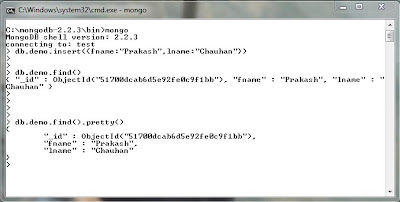Java Web Start is an application deployment technology that can be used to download and run java applications from the web . The download and installation can be done with a single step without going through the complicated installation process.
Java Web Start also caches the downloaded application on local machine so the subsequent invocations are instantaneous as all the required resources are available locally .It also checks the applications's website to see if a new version is available , and if so , automatically downloads and launches it .
Where to find Java Web Start in java distribution ?
It is included in the Java runtime environment since Java 5.0. Just try to find it in bin directory of jdk / jre .
How to launch an application using Java Web Start ?
1. From browser :
Just click on a link from a webpage.
2. From desktop icon :
Shortcuts can be created on desktop or start menu .
3. From Java Application Cache Viewer :
Cache Viewer allows to directly launch an application that has already been downloaded .
Launching Cache Viewer :
a. Go to Control Panel -> Java . This will open Java Control Panel window.
b. On "General" tab , click on the button "View" ( from section "Temporary Internet Files" ).
This will open a new window "Java Cache Viewer " . Now just double click the application to launch.
4. From command prompt :
On command prompt , just type
javaws jnlp_url
jnlp_url : url of the jnlp file of the application.
Java Web Start also caches the downloaded application on local machine so the subsequent invocations are instantaneous as all the required resources are available locally .It also checks the applications's website to see if a new version is available , and if so , automatically downloads and launches it .
Where to find Java Web Start in java distribution ?
It is included in the Java runtime environment since Java 5.0. Just try to find it in bin directory of jdk / jre .
How to launch an application using Java Web Start ?
1. From browser :
Just click on a link from a webpage.
2. From desktop icon :
Shortcuts can be created on desktop or start menu .
3. From Java Application Cache Viewer :
Cache Viewer allows to directly launch an application that has already been downloaded .
Launching Cache Viewer :
a. Go to Control Panel -> Java . This will open Java Control Panel window.
b. On "General" tab , click on the button "View" ( from section "Temporary Internet Files" ).
This will open a new window "Java Cache Viewer " . Now just double click the application to launch.
4. From command prompt :
On command prompt , just type
javaws jnlp_url
jnlp_url : url of the jnlp file of the application.






















